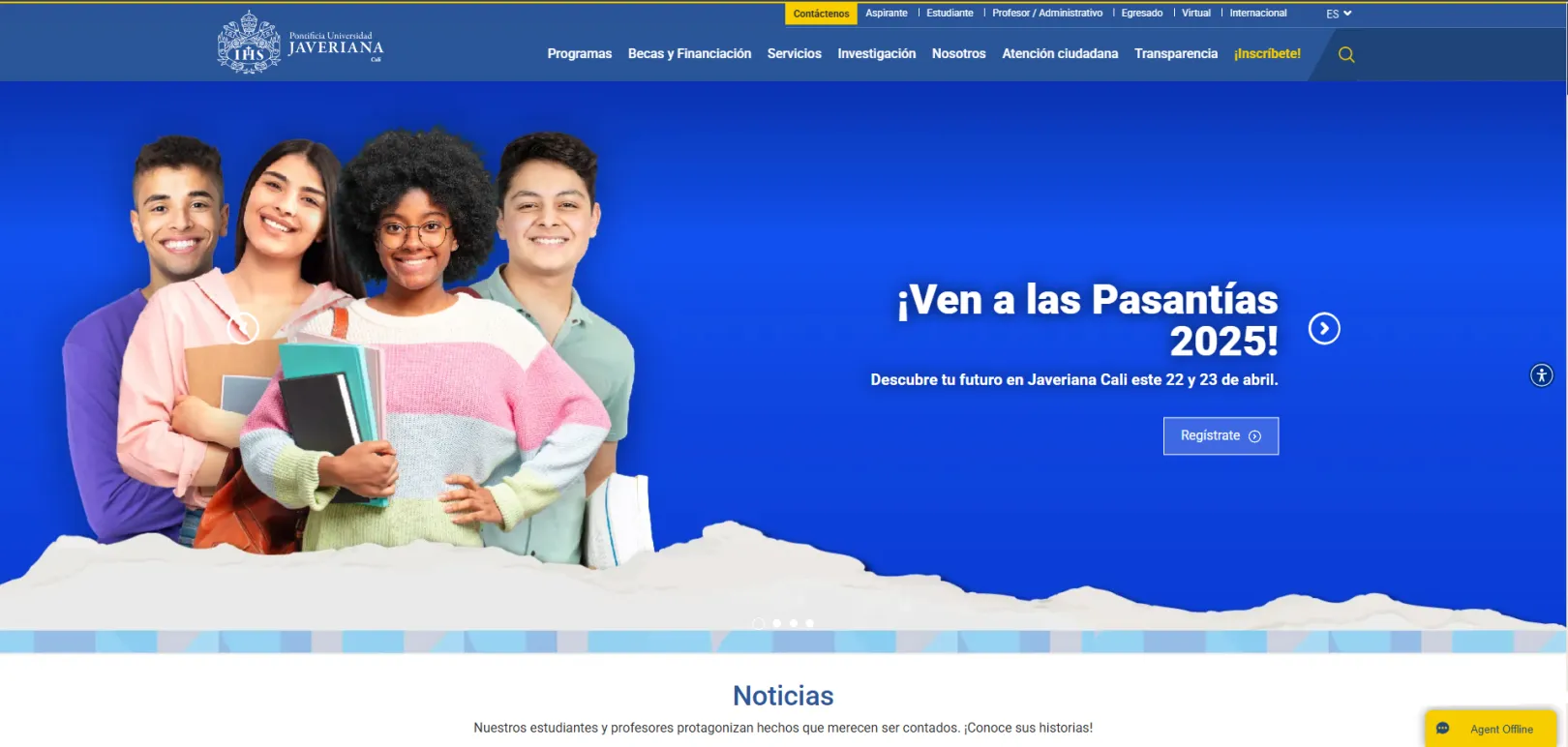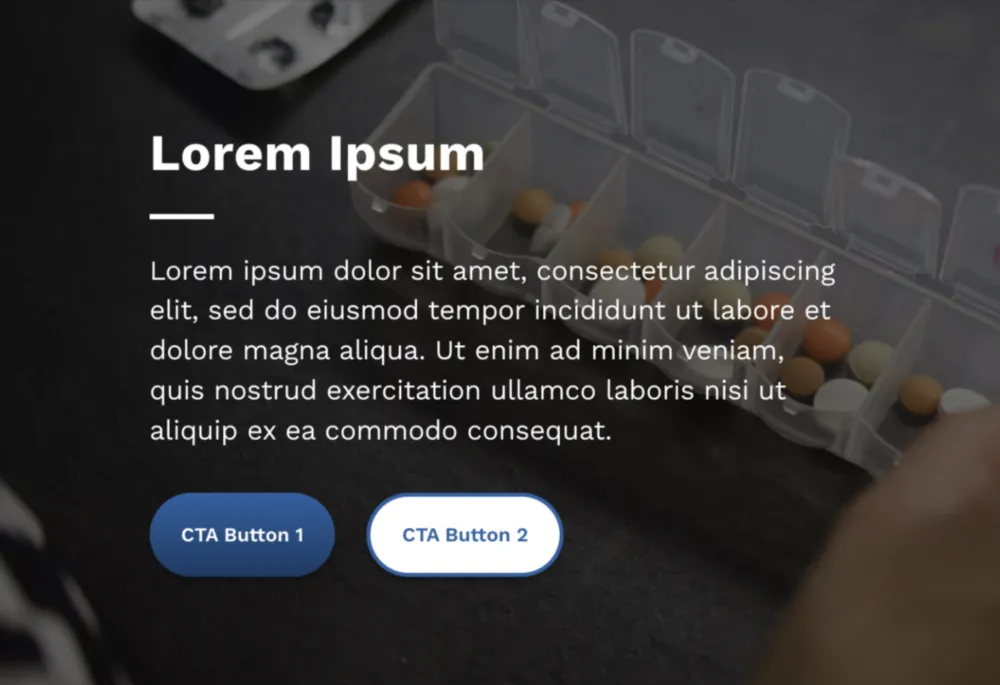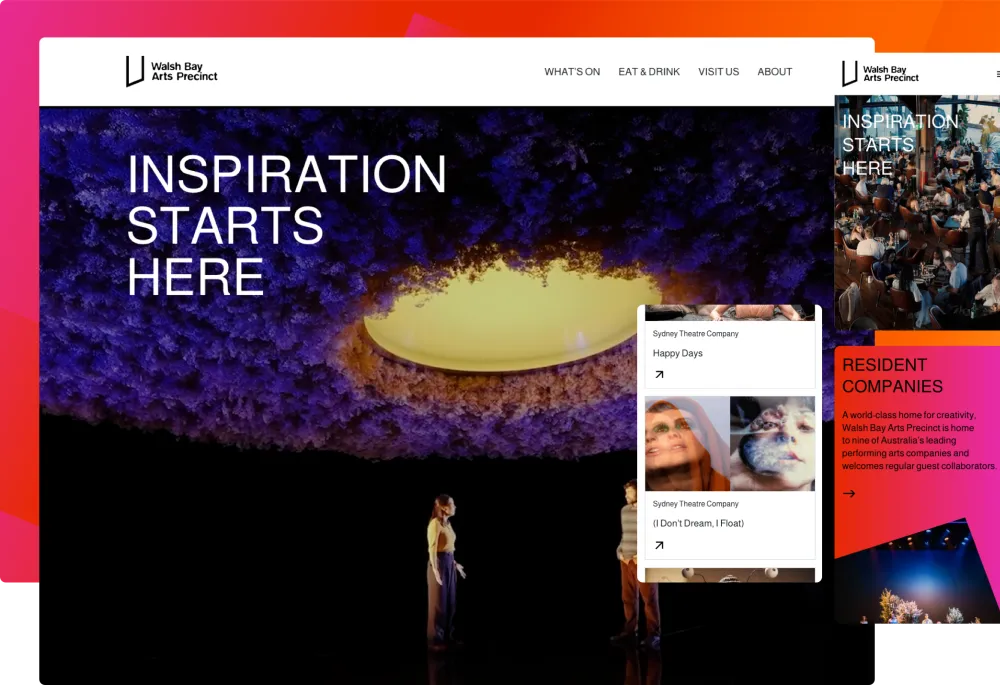Inside the project
Pontificia Universidad Javeriana, an institution run by the Society of Jesus, has over 400 years of history in Colombia and more than five decades in Cali. It offers a diverse academic portfolio that includes undergraduate and postgraduate degrees, continuing education, magazines and publications, as well as a cultural FM radio station.
In their effort to improve how content reaches students, alumni, and the wider community, the university’s marketing and content team identified the need for a modern, flexible platform. They envisioned a portal that would be easier to manage, faster to load, and capable of supporting multiple microsites across departments. The transition to a new structure marked a turning point in their digital evolution.
The challenge
The university’s previous CMS couldn’t keep pace with their growing needs. Content management was centralized and cumbersome, making it difficult for departments to manage their own information. Performance and security concerns also hindered the ability to scale. Additionally, the site’s outdated design didn’t align with current usability or SEO best practices, limiting engagement and discoverability.
The solution
The university partnered with a development team to implement a Drupal-based solution that addressed their core priorities: decentralized content management, improved performance, and enhanced user experience.
A detailed usability audit laid the foundation for a redesigned structure and layout. Custom wireframes and graphic designs were created for the homepage and internal sections, tailored to the needs of students, faculty, and external users. The project also included the development of the Continuing Education Virtual Community.
Infrastructure recommendations were delivered to ensure a reliable hosting environment, while Drupal’s content model made it easier for different university areas to maintain their own sections of the site.
Key features and benefits
- Fully decentralized content management: departments can now independently manage their sections of the website.
- Faster performance and load times: optimized infrastructure ensures the site is always responsive.
- Improved SEO: restructured information architecture and search-friendly practices support better ranking.
- Accessibility and usability: enhanced readability, intuitive navigation, and consistent design patterns.
- Scalable architecture: easily accommodates microsites for various university initiatives.
- Dedicated space for continuing education: the virtual community supports ongoing training and professional development.
Conclusion
The launch of the new portal has empowered the university to manage its digital presence more efficiently while offering a better experience to its stakeholders. With improved navigation, content visibility, and performance, the platform is now a central part of the university’s communication and engagement strategy.
Drupal was selected for its proven ability to support complex content ecosystems. Its modular architecture and robust permission controls made it possible to decentralize content management without compromising consistency or security. With Drupal, the university gained a stable, scalable, and customizable platform aligned with their long-term digital goals.

Technical Specifications
Drupal version:


